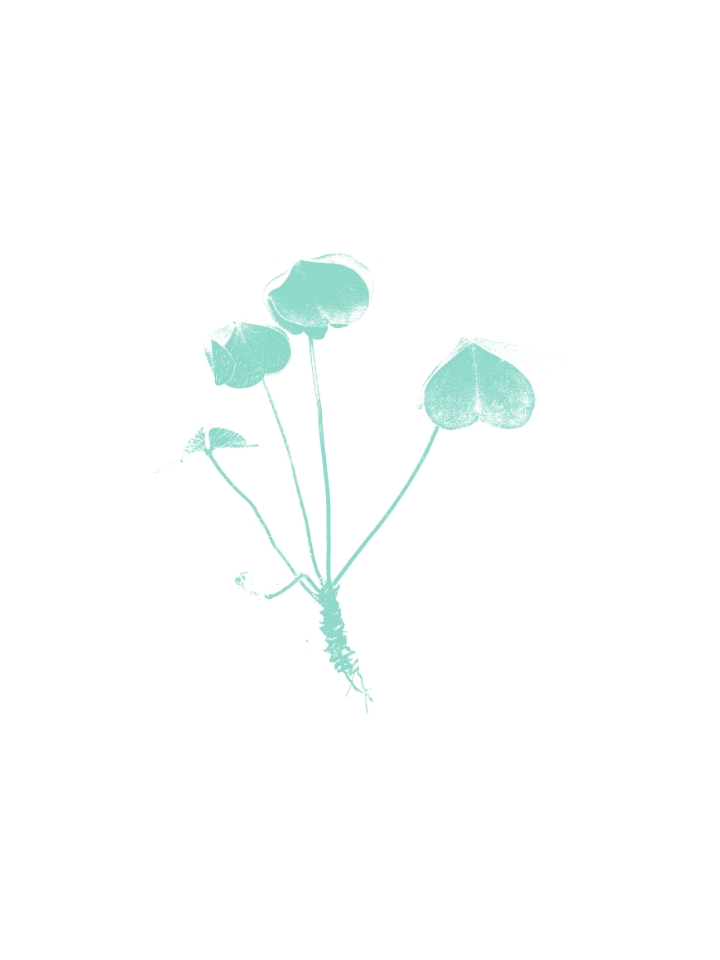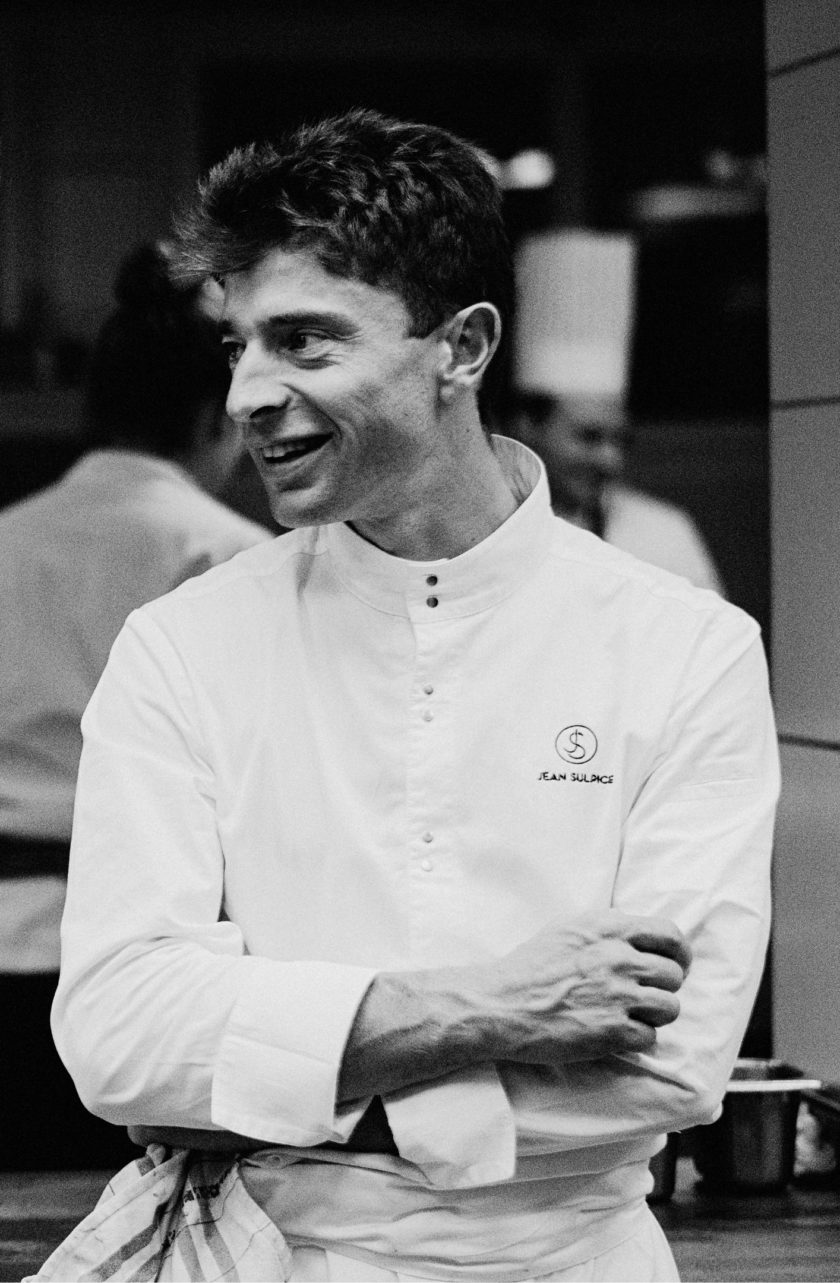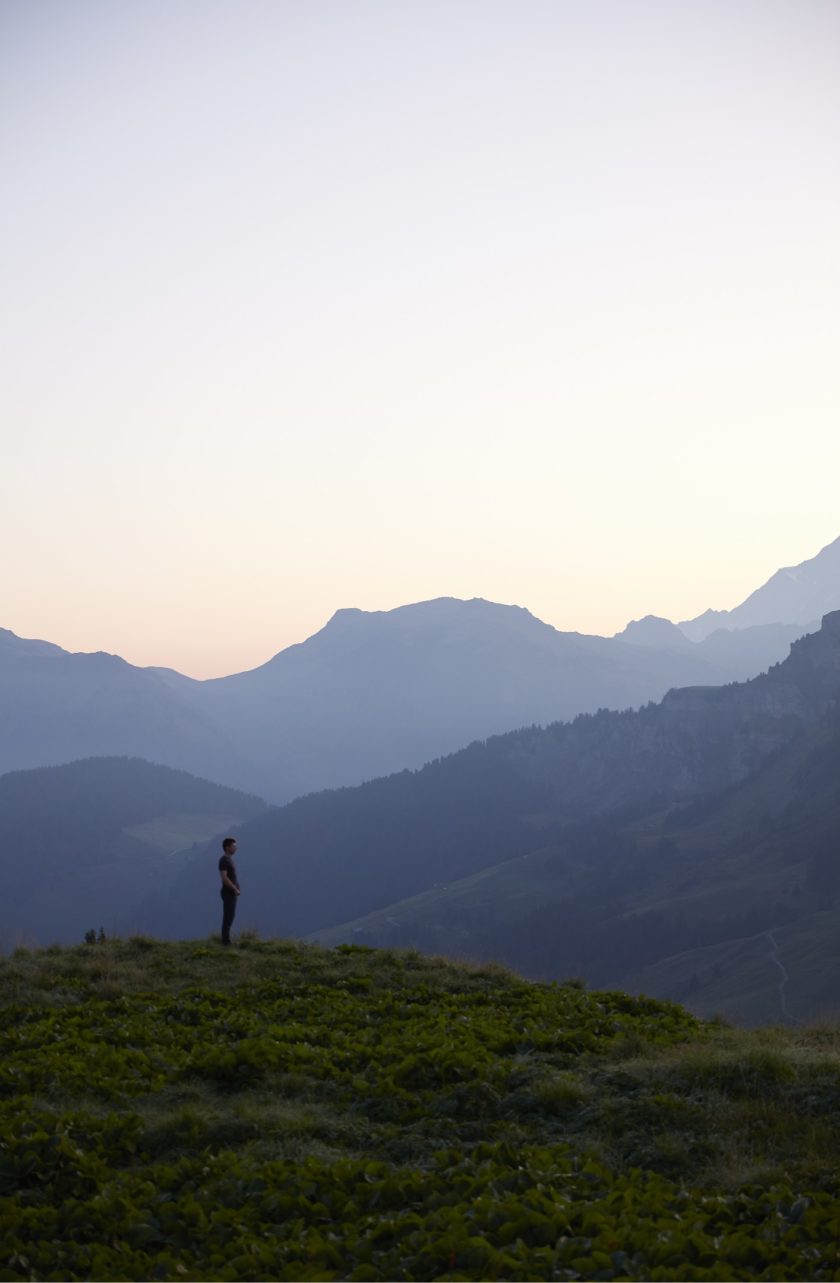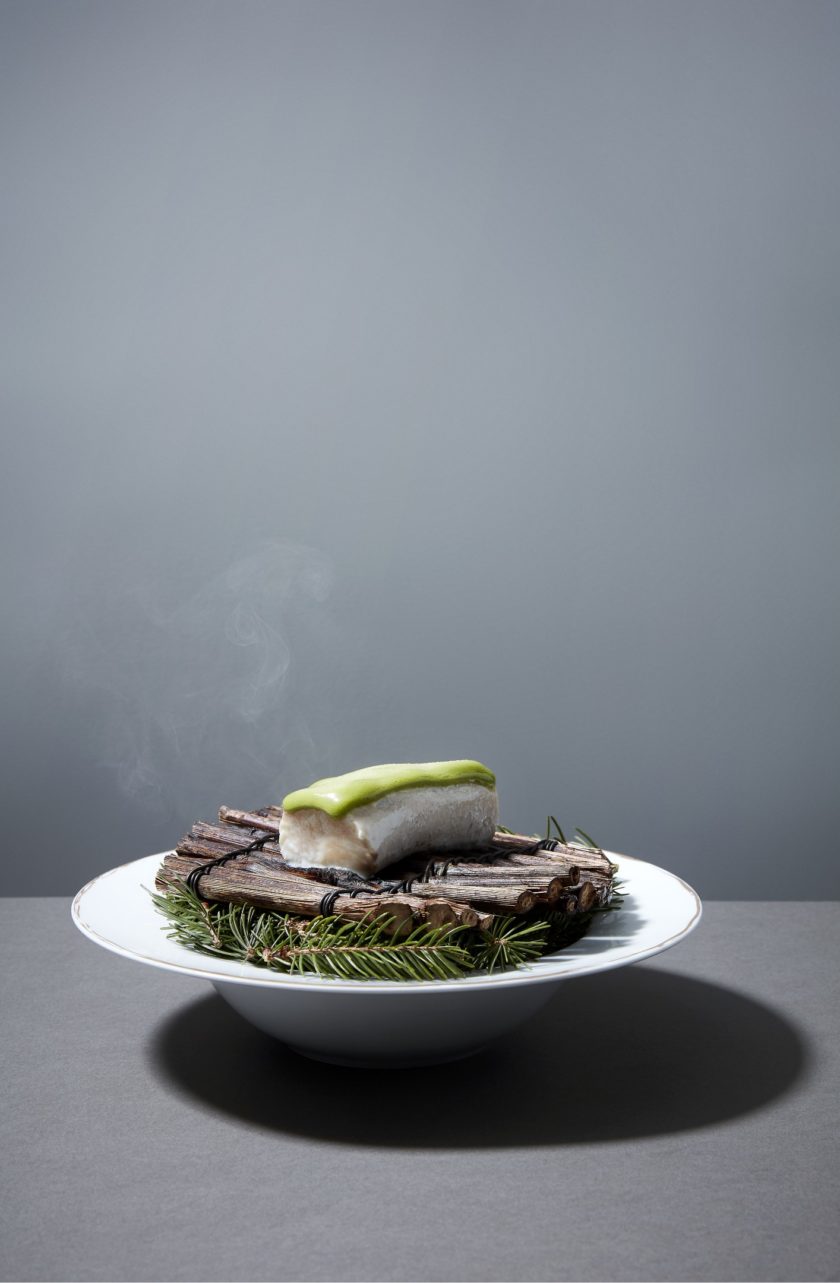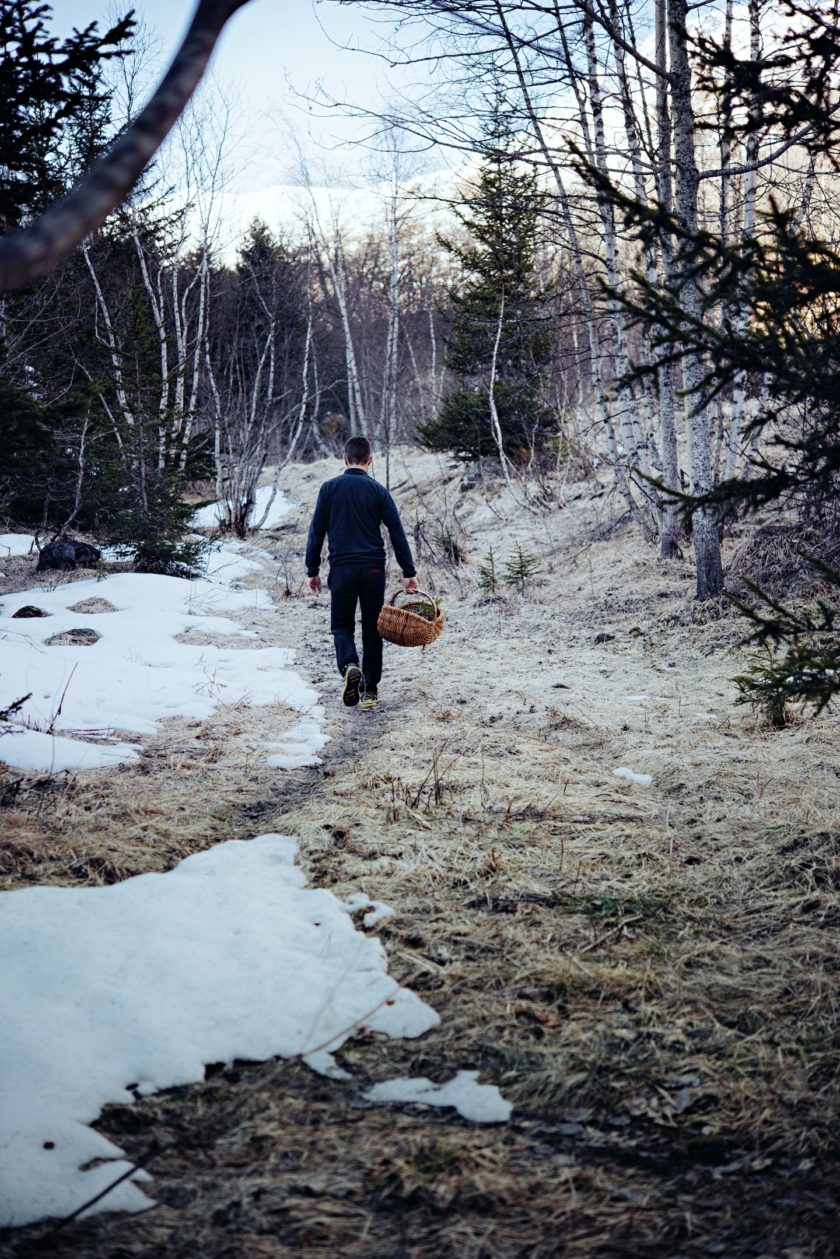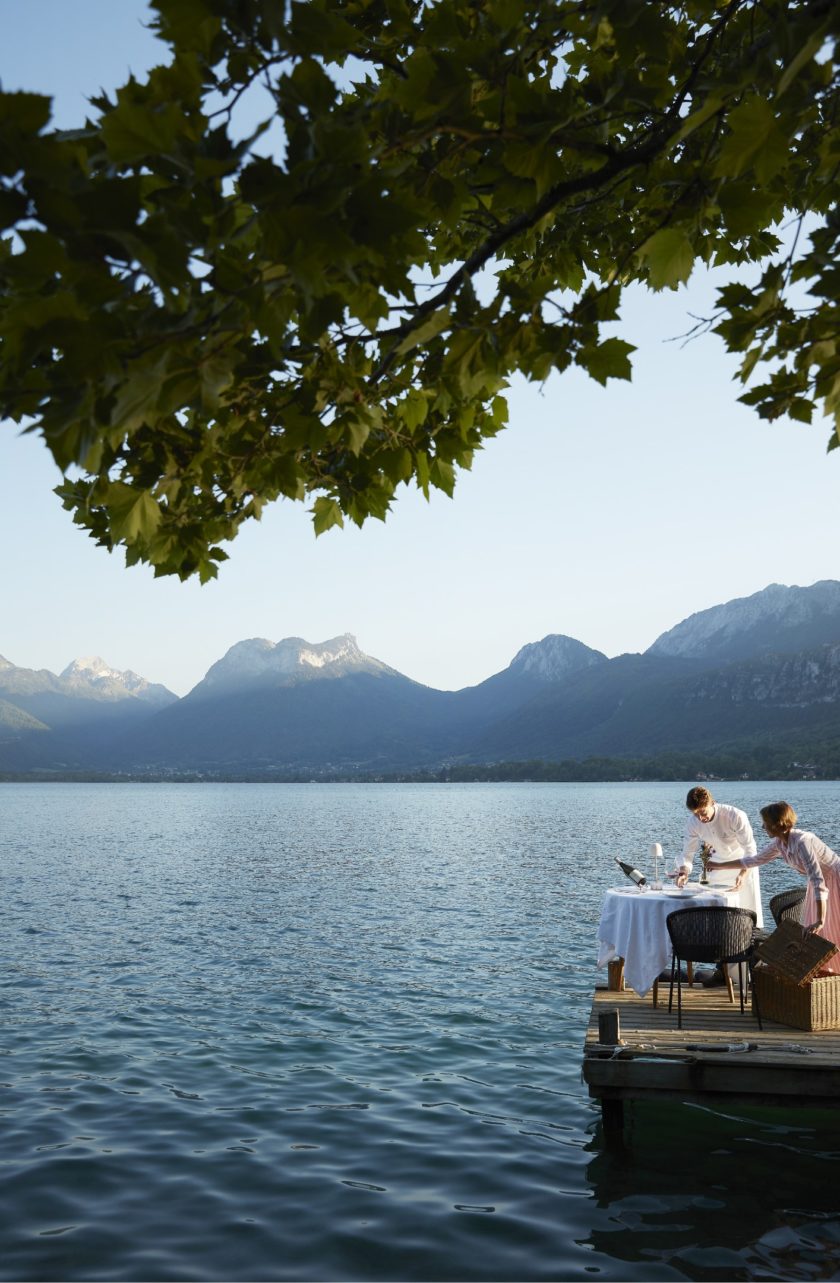2 Michelin stars later, now at the head of the highest gastronomic restaurant in the world, the Sulpices have only experienced winter. Very much like an incomplete score, working across all seasons is becoming more and more tempting. A wish that would soon be granted. Magali and Jean were entrusted by Charlyne Bise with a hundred-year-old legendary establishment: the Auberge du Père Bise. From a simple drinking establishment to a genuine institution, from 1903 to the present day, this establishment sits by the crystalline waters of Lake Annecy, an invitation to marvel. The beginning of the Sulpice era – even though the couple was determined to preserve the Bise family’s legacy and considerable influence. With their two children, Paul and Sophie, Jean and Magali have started a new chapter in their lives. Magali manages the hotel with modernity and simplicity. The establishment was listed as a must-see property in the Relais & Châteaux guide. Jean is responsible for building a new gastronomic table, and then that of his bistro. Together, they took on the gamble of restoring the Auberge’s former glory, while remaining accessible thanks to the 1903 Bistrot and the Père Bise Boutique. By the end of the first year, the Auberge du Père Bise was awarded 2 Michelin stars, rewarding their hard work and perseverance. Around that time, Jean Sulpice was named Chef of the Year by Gault&Millau.
Charlyne Bise was planning her succession. I heard about it but I didn’t want to go. The Auberge du Père Bise has always impressed me greatly, by its history, its experience, the personalities it has hosted. It’s a spacious establishment, difficult to manage, and so it’s no secret that I didn’t feel up to the task. Days later, we felt it was the end of a cycle in Val Thorens, and they found the right words to convince us. Magali and I realised our potential, our ability, and we took the dive into the lake. Today, Auberge du Père Bise is a living and breathing place dedicated to sensory pleasures. Every day, we feel an immense respect for the Bise family. Just seeing the Gratin de Queues d’Écrevisses (Crayfish Tail Gratin) – created in 1925 by Marguerite Bise – garner so much interest among all generations fills me with wonder.
With each new season, Jean Sulpice nurtures his eternal passion for nature. One must at all times be attentive, sensitive to Her moods, Her movements, Her murmurs. Listening to better honour Her and translate Her marvels into the plate. An infinite quest for taste, emotion and, of course, sharing.
You don’t become a chef on your own. Even if you want to push your cuisine as far as you can, you are nothing without others. You quickly realise that it is a privilege and an honour to be able to count on your producers, suppliers and brigades. They are the ones who bring excellence to the highest level, and for that, I can only thank them for their amazing daily commitment. Each day is like a new ascent on a different mountain. During the climb, you discover new plants, you meet different animals and then, at the top, you get to enjoy a view, a life experience never seen before. You can look back and appreciate the path you have taken, to always remember where you came from. And although the wind blows hardest at the top, it is a good reminder that we can fall back down at any instant. In 1995, I saw my brother – then a top-level athlete – lose the use of his legs. He was on the verge of becoming world champion, and all of his hopes vanished in an instant. It was a bitter lesson, and one I always keep in mind.
Sport, competition and challenges are essential elements in a chef’s life, and something they can easily apply to gastronomy. Jean is a lifeaholic, always trying to satiate his endless appetite by pedalling at high speed, following the seasons, making sure he never misses anything. He knows too well that no two seasons are alike.
I still don’t feel like I’m working. This job still finds ways to surprise and dazzle me. There’s nothing more beautiful, in my opinion, than sharing emotions. To surprise someone and bring happiness through a dish is an incredible joy to me. All the while preserving authenticity and simplicity. In this sense, my passion is constant, and never falters, even when the world comes to a standstill. Today, I owe a lot – everything in fact – to my family, to Magali, to my children. They define me as much as those who allow me to live to the fullest, I’m thinking of course of the fishermen, the producers, the breeders with whom I collaborate: my very dear “Team Sulpice”. Thanks to them, I can remain a child unable to sit behind a desk, always on the move, guided by the forests and mountains, amazed by nature and its seasons. This same child that is still building his tree house in the woods.
